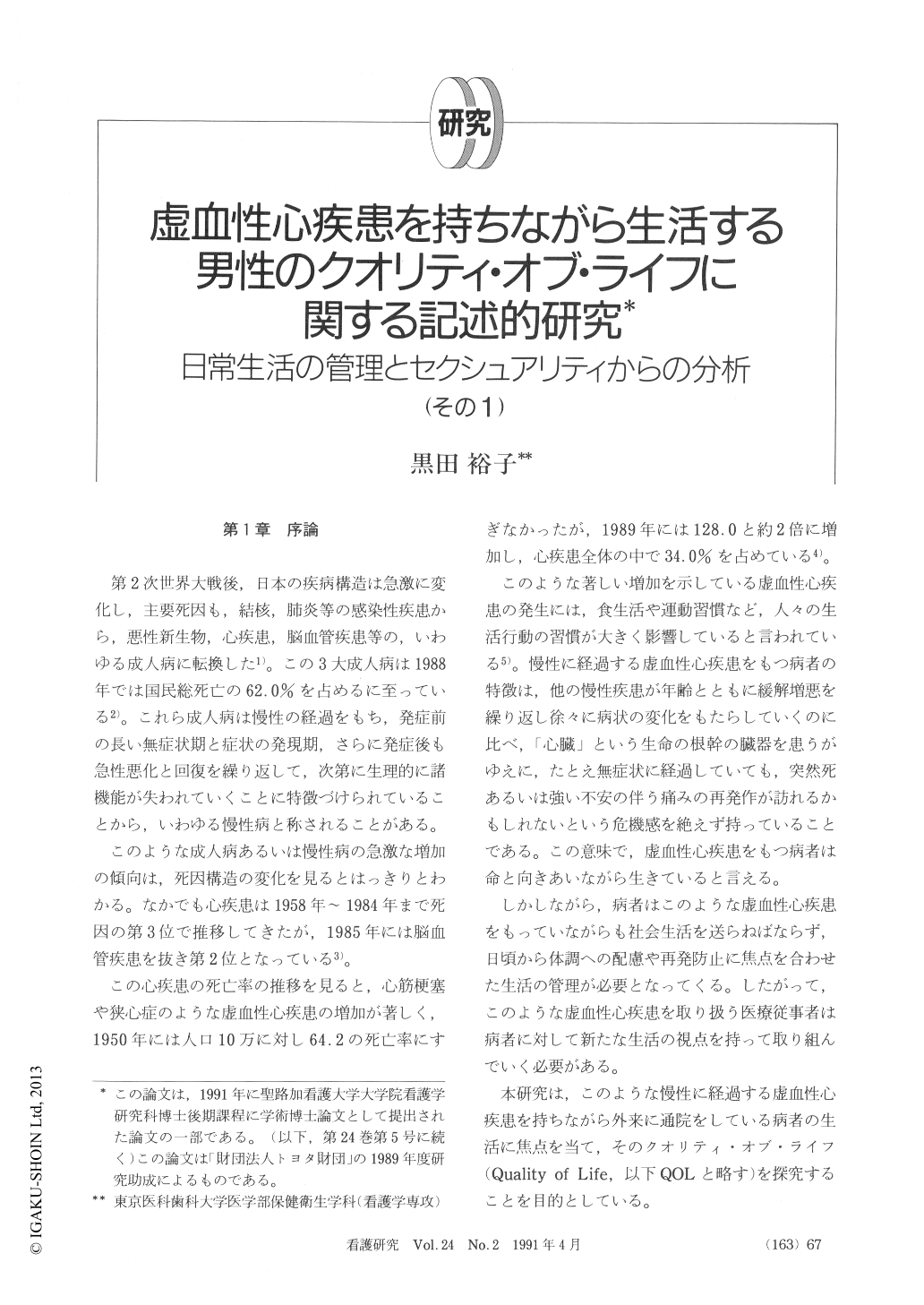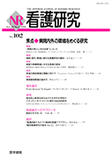Japanese
English
- 有料閲覧
- Abstract 文献概要
- 1ページ目 Look Inside
- サイト内被引用 Cited by
第1章 序論
第2次世界大戦後,日本の疾病構造は急激に変化し,主要死因も,結核,肺炎等の感染性疾患から,悪性新生物,心疾患,脳血管疾患等の,いわゆる成人病に転換した1)。この3大成人病は1988年では国民総死亡の62.0%を占めるに至っている2)。これら成人病は慢性の経過をもち,発症前の長い無症状期と症状の発現期,さらに発症後も急性悪化と回復を繰り返して,次第に生理的に諸機能が失われていくことに特徴づけられていることから,いわゆる慢性病と称されることがある。
このような成人病あるいは慢性病の急激な増加の傾向は,死因構造の変化を見るとはっきりとわかる。なかでも心疾患は1958年〜1984年まで死因の第3位で推移してきたが,1985年には脳血管疾患を抜き第2位となっている3)。
This study aimed to explore the quality of life (hereafter abbreviated as QOL) among men who had been living with chronic ischemic heart disease in society. QOL in this study was defined as the conscious and psychological evaluation of individual life.
The structure of QOL was composed of the two indicators. One was the integrative indicators and the other was the factor indicators. The former refers tothe overall aspect of life, while the latter refers to the multidimensional aspects of life.

Copyright © 1991, Igaku-Shoin Ltd. All rights reserved.


